From The University of Melbourne (AU)
And
The Smithsonian National Museum of Natural History
12.12.23
Dr Vera A. Korasidis | University of Melbourne
Dr Scott L. Wing | Smithsonian National Museum of Natural History
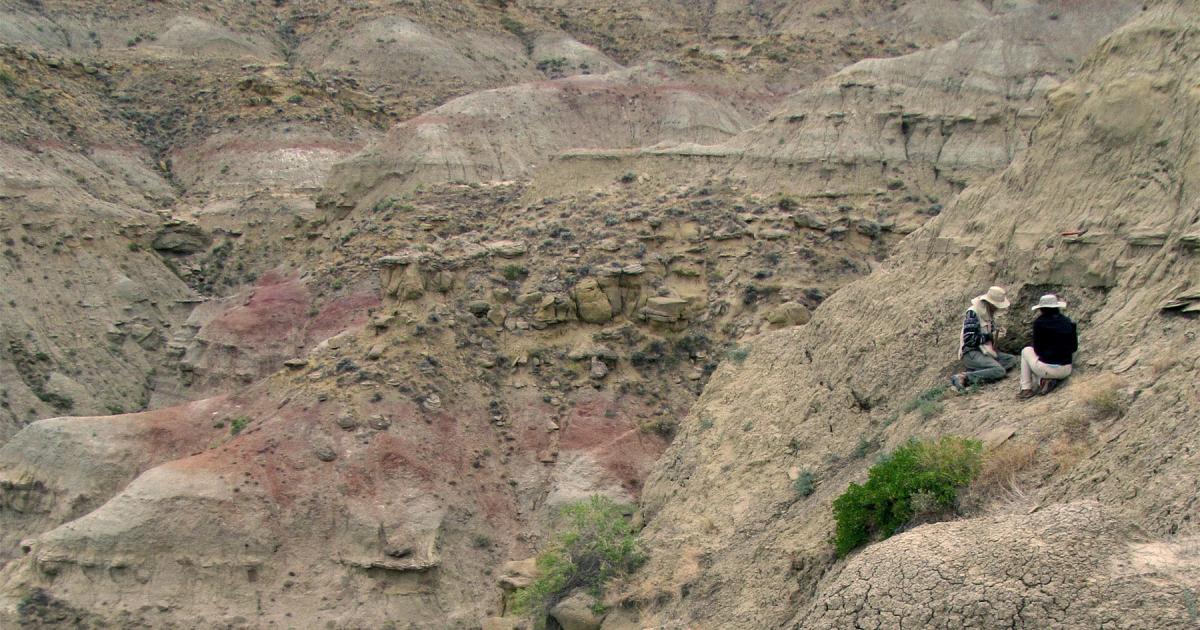
Drs Korasidis and Wing collecting fossil samples in the Bighorn Basin. Supplied.
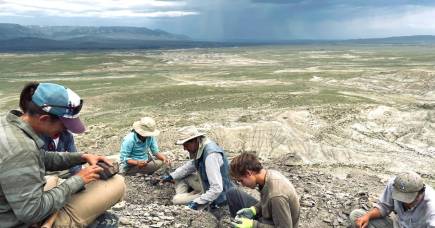
Working at the dig site/Supplied.
Fossil pollen preserved in rocks for 56 million years provides new insights into the consequences of carbon-fueled global warming.
Through our burning of fossil fuels and other activities, we humans have raised atmospheric carbon dioxide (CO₂) concentrations more than 40 per cent in the last 150 years. This increase in CO₂, and in another greenhouse gas – methane – has warmed the planet more than 1°C.
Present greenhouse gas concentrations and temperature are not only unprecedented in human history, but exceed anything known in the last 2.5 million years.
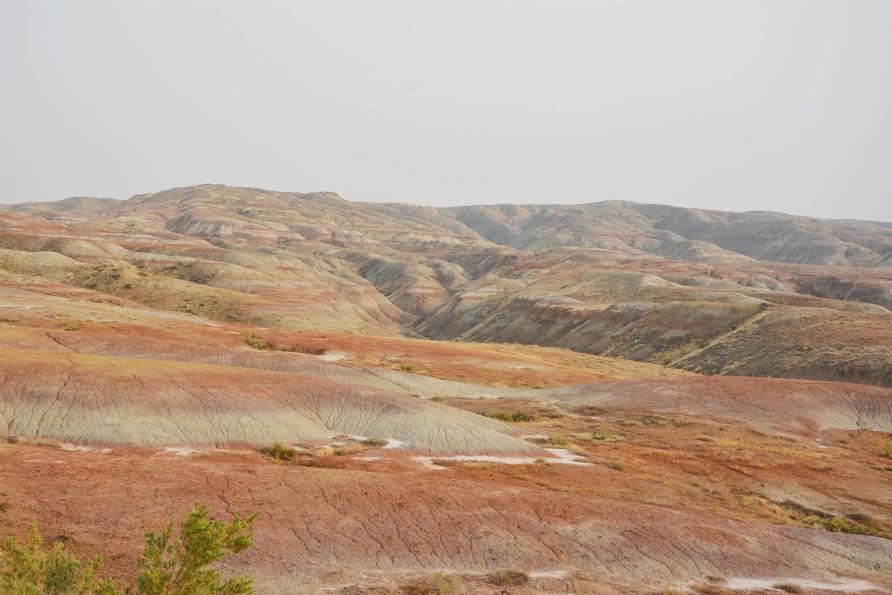
Bighorn Basin in the badlands of Wyoming, is a paradise for palaeontologists. Picture: Supplied.
We need to look deeper into Earth’s history for examples of how giant carbon emission events like ours affect climate and life.
A great time period to study rapid carbon release and global warming is 56 million years ago, with an event called the Paleocene-Eocene Thermal Maximum (PETM). The PETM is the most rapid global warming event known in Earth’s history.
Over a period of about 5000 years, an amount of carbon roughly equal to the total modern fossil fuel reservoir was released into the atmosphere, probably from a combination of volcanism and carbon stored in sea-floor sediments.
This carbon release caused global temperature to rise by about 6°C and to remain elevated for more than 100,000 years.
Although the initial carbon release and climate change were perhaps ten times slower than what we are doing today, they had enormous effects on ocean chemistry and the geographic distributions of plants and animals.
Our team is interested in how the PETM affected terrestrial ecosystems and a great place to study this is the Bighorn Basin – a deep and wide valley amidst the northern Rocky Mountains in Wyoming.
The widespread badlands of the modern day Bighorn Basin expose remarkably fossil-rich sediments lain down by ancient rivers eroding the surrounding mountains.
And it’s paradise for any palaeontologist interested in the PETM.
Efforts by earlier scientists have shown an array of changes in Bighorn Basin ecosystems during the PETM. A horde of new types of mammals first appeared in North America during the PETM, probably migrating from other continents across northern land bridges made habitable by the warmer temperatures.
Many kinds of mammals evolved much smaller body sizes – probably related to the high temperatures and possibly related to some plants becoming less nutritious in a high CO₂ atmosphere.
There are studies of fossil leaves that show many kinds of plants disappeared from the region and were replaced by plants better adapted to hot, dry climates.
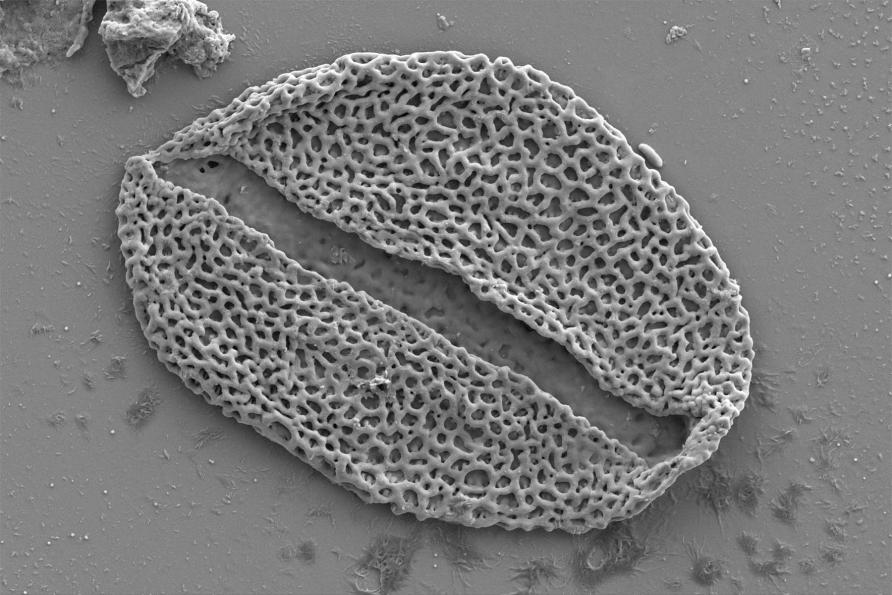
Pollen is abundant in the fossil record at Bighorn Basin. Pictured is an electron micrograph of fossil palm pollen. Picture: Supplied.
Our team studied fossil pollen grains because we wanted to understand the changes in the flora in the finest possible detail. Pollen is invaluable for this kind of research because it is abundantly produced, widely dispersed in air and water, and resistant to decay so that it is easily preserved in ancient rocks.
Our new research shows that floras began to change in the last few tens of thousands of years just prior to the big carbon release. The deciduous broad-leaved tree families still common in moist Northern Hemisphere temperate regions today became rarer, and subtropical palms and other plants of warm climates became more common.
Those pre-PETM changes show the climate was already warming and drying, perhaps because of the buildup of greenhouse gases in the atmosphere from the volcanic activity documented in the North Atlantic.
But then when the PETM began, we found dramatic changes in plants – over a few tens of thousands of years all plants that lived in wetland habitats disappeared and plants that can tolerate a hot and dry climate invaded the Bighorn Basin.
Imagine a shift from vegetation that resembled modern-day swamps in Georgia and Florida to something like the dry tropical forests of southern Mexico and Costa Rica.
You may be wondering, as we did, where these tropical plants that temporarily appeared in Wyoming came from?
Earlier this year, our team described some new species from the PETM in Wyoming.
After sharing illustrations of the pollen grains of these species, some industry experts were able to confirm that they’d seen the same species in Paleocene rocks a few million years older on the Gulf Coast in the southern United States, some 2000 kilometres away.
This suggests that these trees migrated north as the continent warmed and dried, but then retreated back south when conditions cooled.
As the PETM waned and the Earth cooled – moist, temperate forest trees returned to the Bighorn Basin. A few hundred thousand years after the PETM, the swamp forests of the Bighorn Basin were dominated by many of the same trees that were abundant before the PETM, along with a few new types that probably entered North America across Arctic land bridges from other continents during the warmest time.
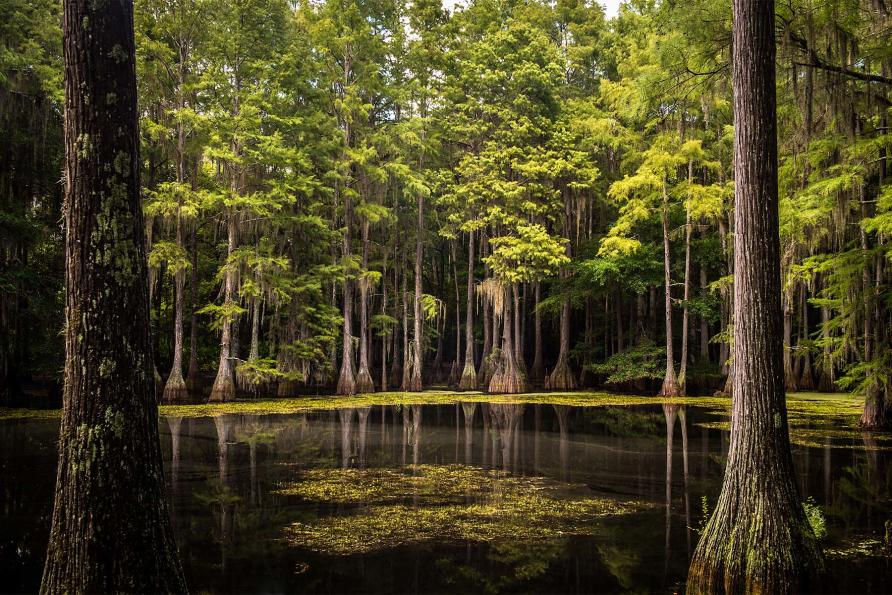
Before and after the PETM, Bighorn Basin was filled with swamp forests like now found in Florida and Georgia. Picture: Getty Images.
You might think that such rapid change in a short time – a few tens of thousands of years is very long by human standards, but geologically very sudden – would lead to high levels of extinction, but we don’t see this in either the pollen or the leaf fossils.
We now strongly suspect that the lack of extinction amongst the plants reflects local refuges, at higher elevations in the then-rising Rocky Mountains, or perhaps in other nearby basins less affected by drought.
The PETM shows a concerning glimpse into our future – global warming, ocean acidification and a dramatic alteration of ecosystems on land and in the sea that are very long-lasting.
It could take 100,000 years to remove all of the carbon from the atmosphere by natural processes if we were to burn Earth’s entire fossil fuel reservoir.
Much of what the PETM tells us confirms the grim forecasts of climate models and predictions of ecological disruption.
We do see one result, though, with less dire implications.
Even amid the major and geologically rapid climate change at the beginning of the PETM, plant populations survived somewhere in this mountainous region.
Also heartening, if we take a very long-term perspective, is that without mass extinction, the wet forests returned to the Bighorn Basin in the Eocene epoch. After more than 100,000 years of hot, dry climate – these forests were very similar to those that existed before the event.
A walk in the woods of the early Eocene epoch would have been quite similar to one near the end of the Paleocene.
This suggests that forests could return to something like their previous equilibrium even after a very long period of altered climate – as long as we find a way to preserve all of the species that make up these unique ecologies.
See the full article here .
Comments are invited and will be appreciated, especially if the reader finds any errors which I can correct. Use “Reply” near the bottom of the post.

five-ways-keep-your-child-safe-school-shootings
Please help promote STEM in your local schools.
The University of Melbourne (AU) is an Australian public research university located in Melbourne, Victoria. Founded in 1853, it is Australia’s second oldest university and the oldest in Victoria. Times Higher Education ranks Melbourne as high in the world, while the Academic Ranking of World Universities also places Melbourne high in the world.
Melbourne’s main campus is located in Parkville, an inner suburb north of the Melbourne central business district, with several other campuses located across Victoria. Melbourne is a sandstone university and a member of The Group of Eight, Universitas 21 and The Association of Pacific Rim Universities. Since 1872 various residential colleges have become affiliated with the university. There are 12 colleges located on the main campus and in nearby suburbs offering academic, sporting and cultural programs alongside accommodation for Melbourne students and faculty.
Melbourne comprises 11 separate academic units and is associated with numerous institutes and research centres, including the Walter and Eliza Hall Institute of Medical Research, Florey Institute of Neuroscience and Mental Health, the Melbourne Institute of Applied Economic and Social Research and the Grattan Institute. Amongst Melbourne’s 15 graduate schools the Melbourne Business School, the Melbourne Law School and the Melbourne Medical School are particularly well regarded.
Australian prime ministers and governors-general have graduated from Melbourne. Nobel laureates have been students or faculty.

